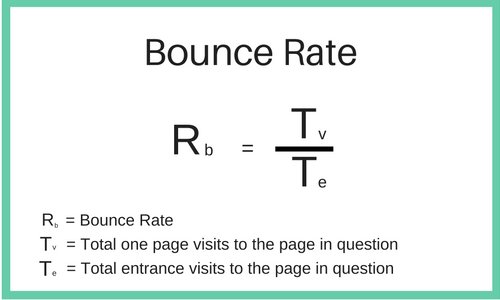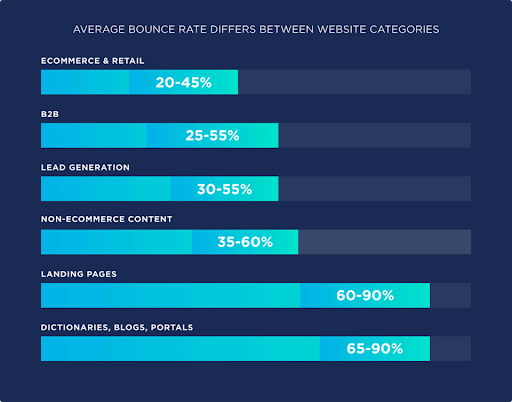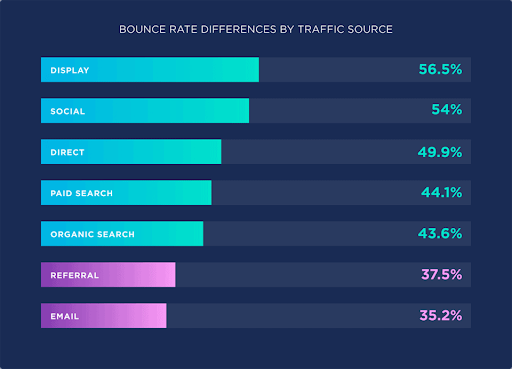What is bounce rate?
A “bounce” occurs when a user visits a website and leaves without interacting or performing any action, such as filling out a form, clicking on a link, making a purchase, etc. The bounce rate refers to the percentage of visitors who bounce off a site.
The bounce rate is considered high when a visitor’s overall session duration is short and the individual leaves the webpage instantly without taking any action.
A low bounce rate means that visitors are spending quality time on a page and performing actionable clicks.
How to calculate bounce rate?
A single-page bounce rate is the total number of bounces divided by the total number of visits to the page.

Importance of bounce rate
Few reasons why bounce rate is important:
- A user bouncing from a site means non-conversion. Hence, not letting a visitor bounce, can help increase the conversion rate.
- The bounce rate is used as a Google ranking factor. An industry study by Backlinko found that bounce rate was closely correlated to Google’s first page rankings.
- A high bounce rate indicates that the site (or specific pages on the site) has a problem with content, user experience, page layout, or copywriting. Identifying the issue can lead to improvements to the website.
Bounce rate vs. exit rate
Most of the time, both these terms are treated as the same. However, both are different in the following way:
| Bounce Rate | Exit Rate |
| This is the percentage of people that land and leave a single page. | It is the percentage of people leaving a specific page even if it was not the initial landing page. |
| A bounce may indicate a lack of interest in a page or site | A high exit rate may indicate problems with conversion rate optimization (CRO) |
The good, bad, and average bounce rate
A “normal” bounce rate is highly dependent on the industry and the source of the traffic.
For example, Custom Media Labs found that different types of websites had very different bounce rates.

As you can see, e-commerce websites have the lowest average bounce rate (20-45%). While blogs have a bounce rate going high up to 90%.
Therefore, to know what is a good bounce rate, it is a good practice to compare sites in the same category.
Also, website traffic sources can have a dramatic impact on a site’s bounce rate. ConversionXL found out that email and referral traffic has the lowest bounce rate, whereas display ads and social media traffic tend to acquire a super high bounce rate.

Common reasons for high bounce rate
Some reasons that can impact bounce rate negatively are:
- Slow page speed
- Pop-ups
- Needless plugins
- Irrelevant usability
- Improperly optimized title tags and meta descriptions
- Technical errors and blank pages
- Bad content
- Page not optimized for mobile devices
- Improper setup of Google Analytics
- Bad backlinks
Read here about the reasons for the high bounce rate.
Tips to fix high bounce rate
A high bounce rate can be fixed using the below tips:
- Fix site speed. Read here how VWO can affect the site speed.
- Use VWO Insights to figure out where and why users bounce off.
- Improve content so that users are encouraged to spend more time on the website.
- Design highly optimized landing pages to provide an excellent user experience.
- Make the website pages mobile-friendly.
- Utilize A/B testing to make sure all the improvement strategies are bang on track. Take an all-inclusive free trial with VWO for easy A/B testing.
Bounce rate is a metric that can be used to analyze the marketing efforts of a brand and measure if visitors’ expectations are being met. The main goal is to get visitors involved with the website and convert them into loyal customers. Hence, bounce rate can be used to determine which pages need more attention to make them more attractive and interactive to the customers.










